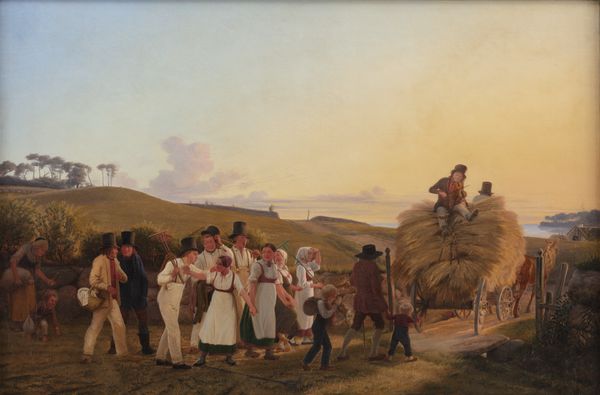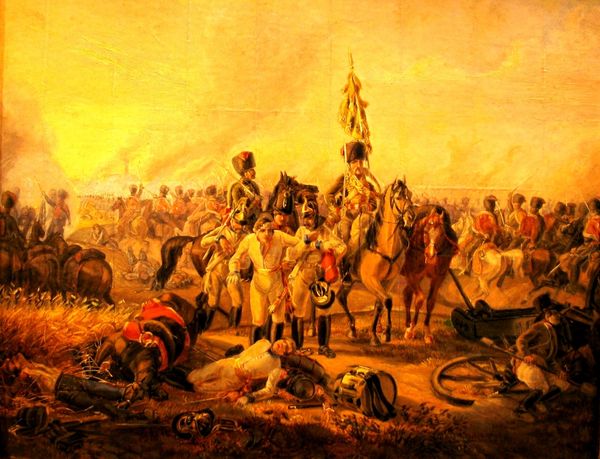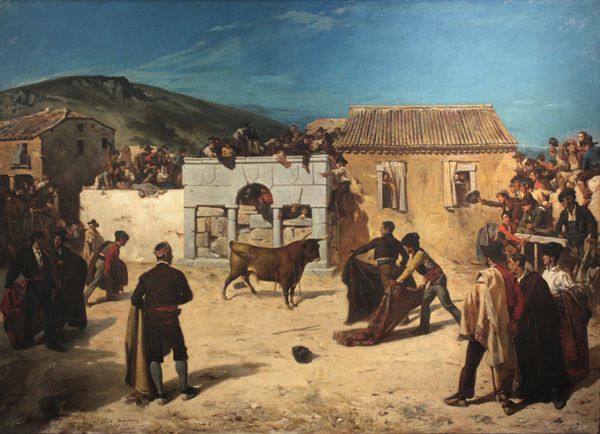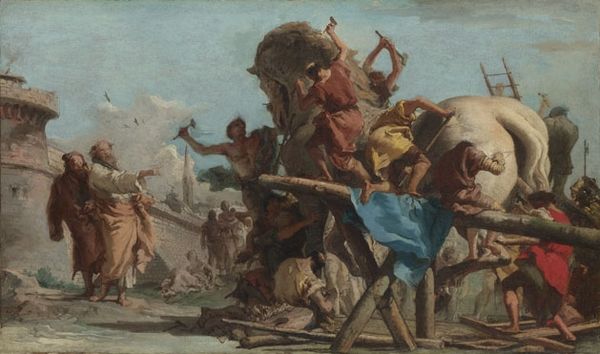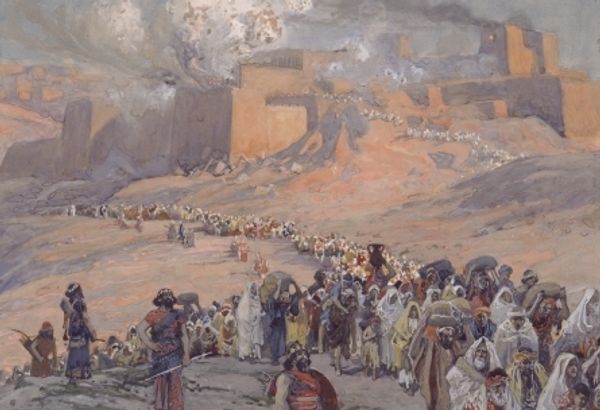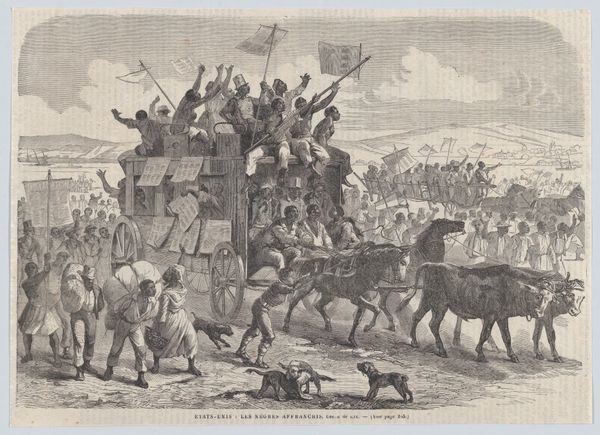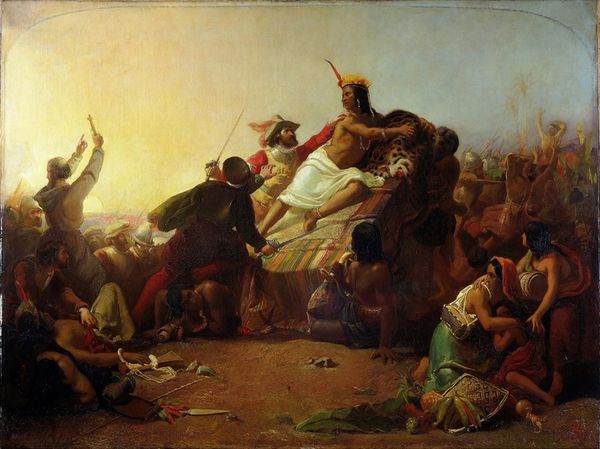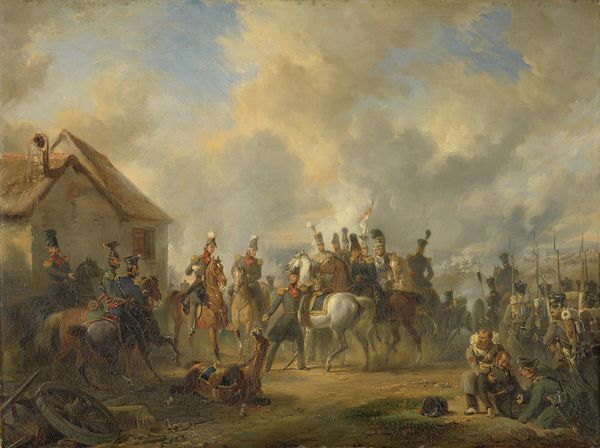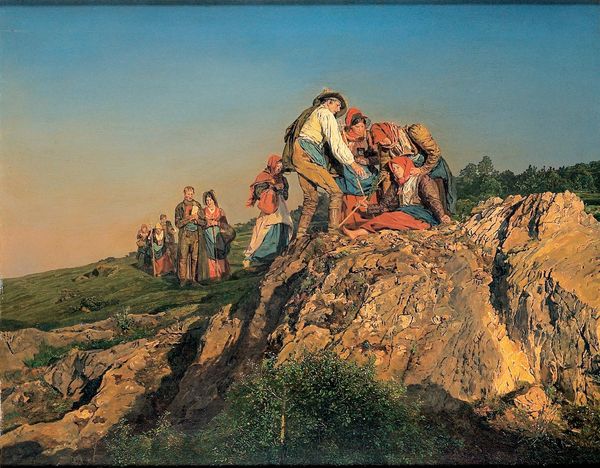
Copyright: Public domain
Editor: Jules Breton's "Fire in a Haystack," painted in 1856 using oil paints, really captures a moment of collective urgency. The frantic energy of the figures contrasted against the large burning structure is striking. What draws your eye when you look at this piece? Curator: Initially, the interplay of light and shadow establishes a dramatic dynamism, doesn't it? Breton masterfully employs chiaroscuro, emphasizing the fire's intense glow against the dimming landscape, thereby constructing a visual dichotomy between destruction and communal effort. Consider how the composition itself, with figures strategically placed in the foreground and receding into the background, creates spatial depth, almost inviting the viewer to join this tableau. The materiality of the paint application, thick impasto in areas, creates a tactile surface enhancing the artwork’s inherent textural qualities. Editor: So, the arrangement and the paint itself are key? Curator: Precisely. It's the formal elements at play: line, color, composition. Note how Breton leads our gaze; upward, to the inferno consuming the haystack. Do you observe how that upward momentum contrasts with the figures moving horizontally? Editor: Yes, I see that now. The composition feels less chaotic when you break it down that way. Curator: That's formalism at work, deciphering art's visual language. Ultimately, "Fire in a Haystack" exemplifies the potency of structure in conveying both emotional impact and aesthetic sensibility, wouldn't you agree? Editor: I do. Looking at the piece in terms of its formal structure, it's far more considered and intricate than I initially perceived. Thank you.
Comments
No comments
Be the first to comment and join the conversation on the ultimate creative platform.

